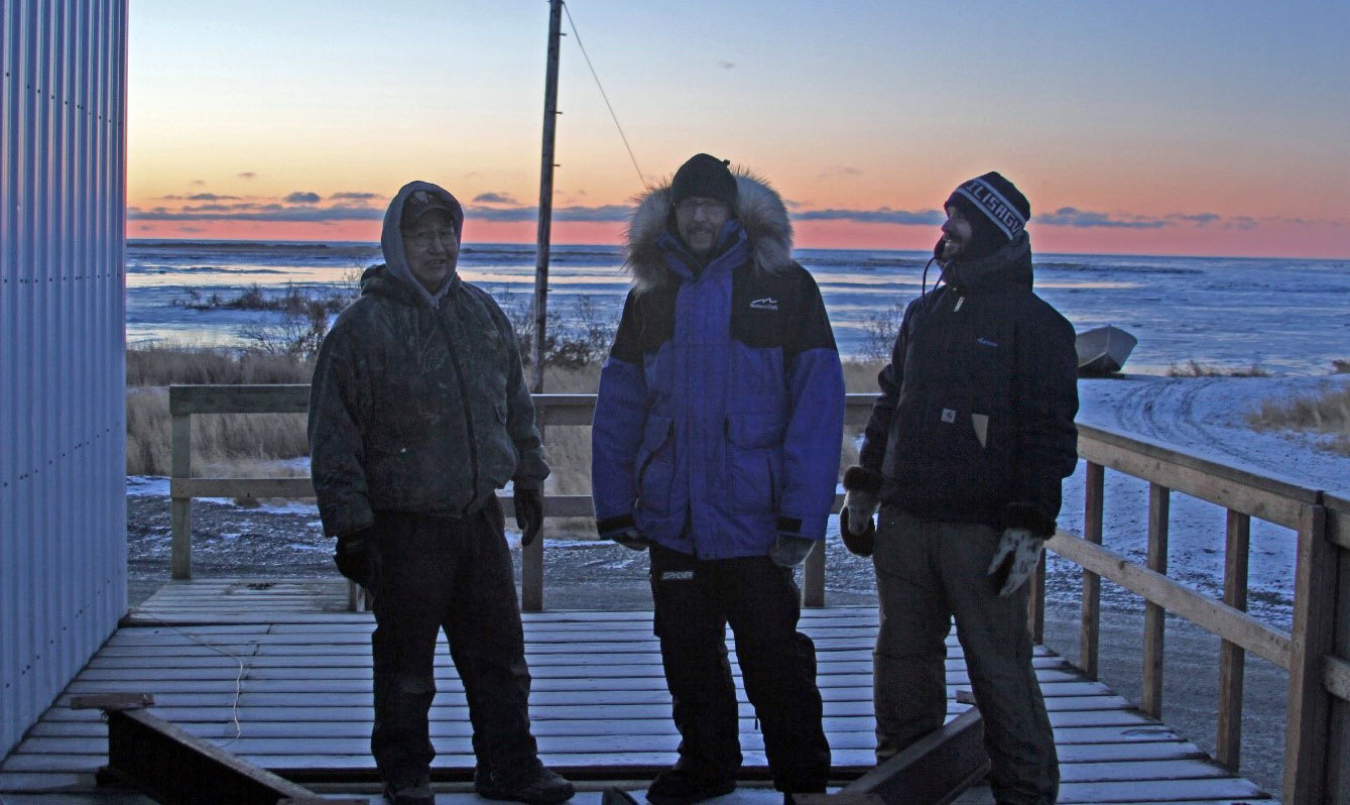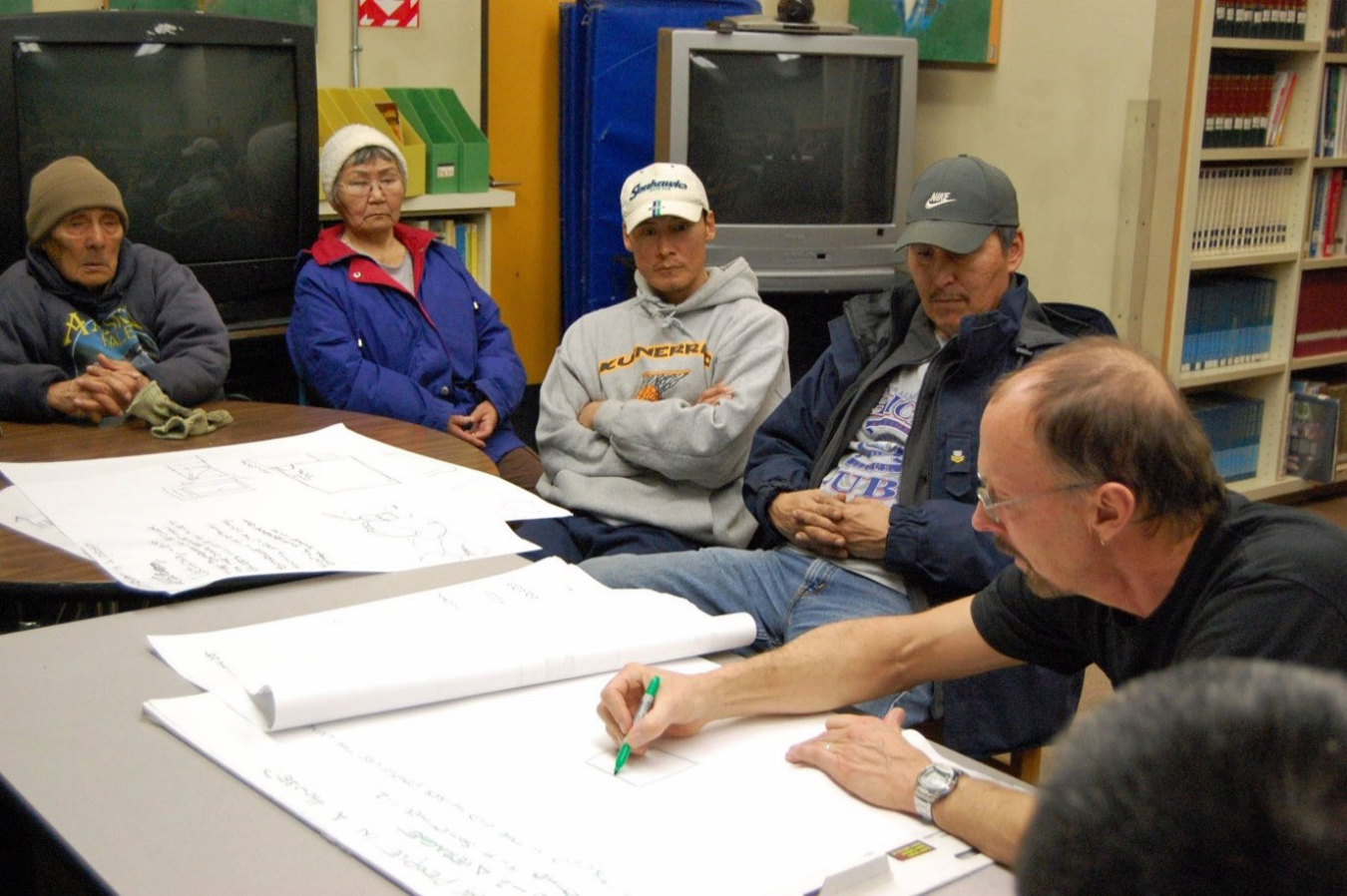Over the past few decades, the paradigm has shifted for building science in cold climates, thanks in no small part to Hébert's commitment.
Office of Indian Energy Policy and Programs
December 11, 2020Change doesn’t happen on its own. It’s led by dedicated and passionate people who are championing innovative solutions to tribal energy challenges. Indian Energy Champions is a U.S. Department of Energy (DOE) Office of Indian Energy blog series spotlighting innovators in Indian energy.
Over the past few decades, the paradigm has shifted for building science in cold climates, thanks in no small part to the commitment of Jack Hébert, founder and CEO of the Cold Climate Housing Research Center (CCHRC) based in Fairbanks, Alaska, which joined forces this year with DOE's National Renewable Energy Laboratory (NREL) in Golden, Colorado.

Jack Hébert
When Hébert started building custom homes in Fairbanks in the '80s, he was doing what every builder was doing—borrowing techniques from other cold climates like Canada or northern Washington. “Building science was adjusted for Alaska; there was no original building science from Alaska,” Hébert said.
This building approach began in the '70s when Alaska’s population boomed with the construction of the Trans-Alaska Pipeline. However, retroactively designing a building for the Arctic isn’t effective. By the '90s, buildings from the pipeline era began to fail—mold, air-quality issues, and costly maintenance were rampant. In addition, most houses used heating oil as the main space-heating fuel, with some costing upwards of $10,000 a year just to stay warm—a huge burden for Alaska households.
Today, Alaska homes are more energy efficient, durable, and comfortable to live in, and heating costs are significantly lower with new construction. While much of the housing stock consists of old homes that are expensive to heat, the state is making progress, and housing authorities across urban and rural Alaska are incorporating insight from CCHRC into their designs. Many credit Hébert with this progress for his CCHRC leadership and “build tight, ventilate right” building design philosophy.
The Start of the Cold Climate Housing Research Center

Jack Hébert (center) during a site visit in Quinhagak, Alaska, on the western coast of the state. Photo from Molly Rettig, CCHRC
Six years after the organization’s inception, CCHRC moved to a brand-new, state-of-the-art research and testing facility in Fairbanks that was funded by a consortium of partners, including DOE.
The facility—the brainchild of Hébert—looks and feels like a home but serves as a “living laboratory” designed to test structural components and materials used in the Alaska housing industry. It remains the farthest north LEED Platinum building in the world, which critics had said wasn’t possible under the cold climate conditions.
“Without Jack, the research center never would have happened,” Bryan Butcher, CEO and Executive Director of the Alaska Housing Finance Corporation, said in an interview for a CCHRC history project. “There needed to be somebody to continue to work tirelessly.”

Jack Hébert (right) meets with a community in Quinhagak, Alaska, to plan a demonstration energy-efficient home. Photo from Molly Rettig, CCHRC
The new research and testing facility allowed the CCHRC team to take on more in-depth research. From the beginning, Hébert prioritized projects that identified processes, methods, and products to improve energy efficiency within Arctic homes.
The team has completed studies on topics ranging from solar hybrid systems with seasonal thermal storage to light-emitting diode (LED) lighting to secure and resilient power generation for military bases in cold climates. Under Hébert’s leadership, CCHRC researchers are developing innovative systems like an adjustable mechanical foundation that can be leveled as the ground underneath thaws or freezes, avoiding the foundation failure that often comes with the traditional building approach.
“We’ve had successes, and we’ve had less than successes. When we’re successful, we’re brilliant. When we’re not so successful, it’s research,” Hébert joked. “It’s all about learning.”
The momentum of CCHRC is poised to accelerate now that the center is part of NREL, DOE’s primary national laboratory for energy efficiency and renewable energy research. The combined capabilities of CCHRC and NREL will allow for new research in the resilience and reliability of energy technologies under extreme weather conditions.
The joining of the two organizations represents an elevated commitment to providing scalable, sustainable, and affordable energy solutions to communities in Alaska and circumpolar regions.
Now with more than 20 years at the helm of the research center, Hébert still thinks science is all about commitment. “When you start to show that something can be done, others step up to meet the challenge,” Hébert said. “With the active participation, strength, and wisdom of the Indigenous people of Alaska, we have literally raised the bar for better housing in Alaska.”
Visit the CCHRC website to learn more about its innovative buildings design and research, and learn more about NREL’s buildings research program.
Read about the Office of Indian Energy’s support for Alaska Natives.

